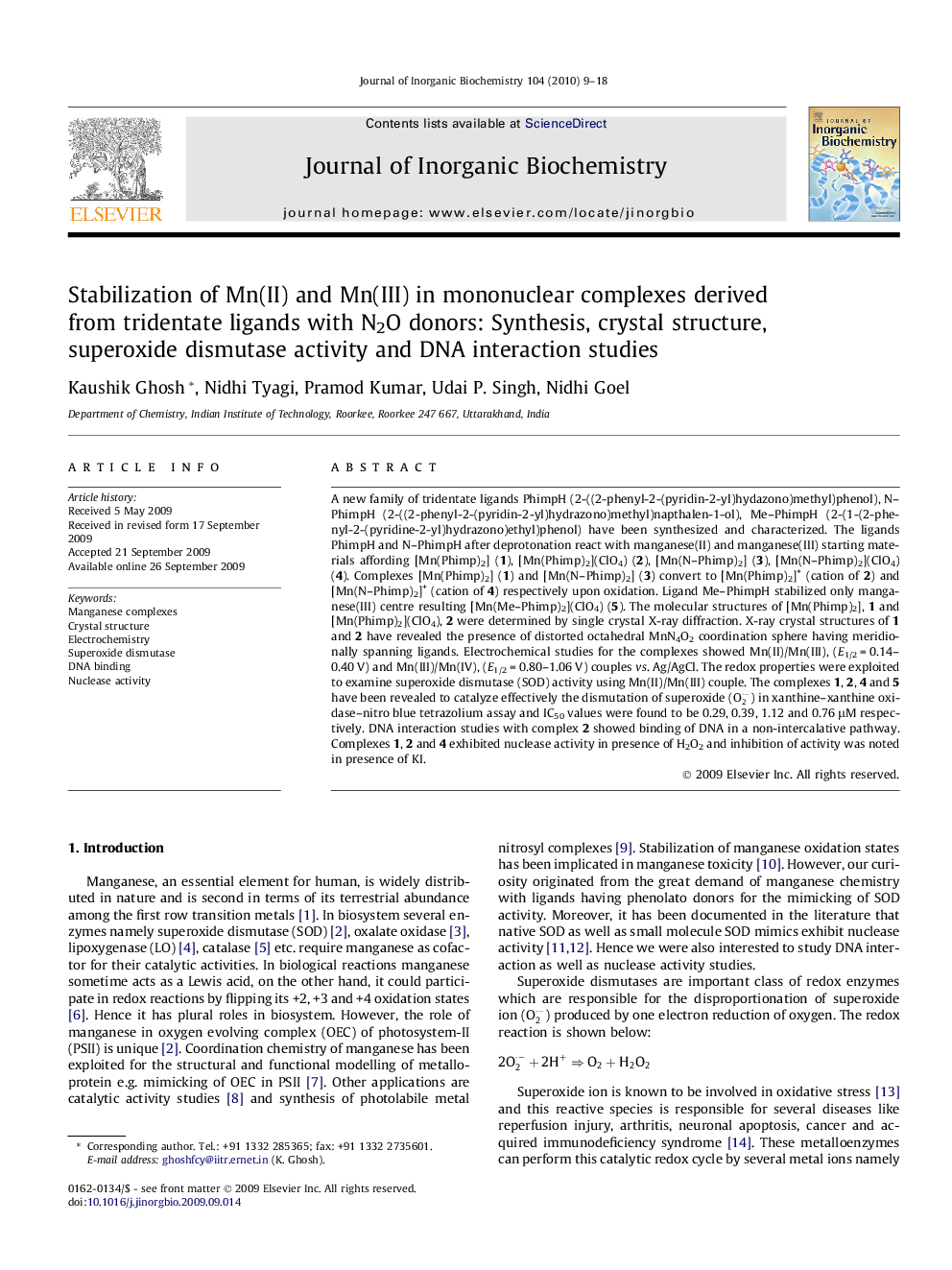| Article ID | Journal | Published Year | Pages | File Type |
|---|---|---|---|---|
| 1316766 | Journal of Inorganic Biochemistry | 2010 | 10 Pages |
A new family of tridentate ligands PhimpH (2-((2-phenyl-2-(pyridin-2-yl)hydazono)methyl)phenol), N–PhimpH (2-((2-phenyl-2-(pyridin-2-yl)hydrazono)methyl)napthalen-1-ol), Me–PhimpH (2-(1-(2-phenyl-2-(pyridine-2-yl)hydrazono)ethyl)phenol) have been synthesized and characterized. The ligands PhimpH and N–PhimpH after deprotonation react with manganese(II) and manganese(III) starting materials affording [Mn(Phimp)2] (1), [Mn(Phimp)2](ClO4) (2), [Mn(N–Phimp)2] (3), [Mn(N–Phimp)2](ClO4) (4). Complexes [Mn(Phimp)2] (1) and [Mn(N–Phimp)2] (3) convert to [Mn(Phimp)2]+ (cation of 2) and [Mn(N–Phimp)2]+ (cation of 4) respectively upon oxidation. Ligand Me–PhimpH stabilized only manganese(III) centre resulting [Mn(Me–Phimp)2](ClO4) (5). The molecular structures of [Mn(Phimp)2], 1 and [Mn(Phimp)2](ClO4), 2 were determined by single crystal X-ray diffraction. X-ray crystal structures of 1 and 2 have revealed the presence of distorted octahedral MnN4O2 coordination sphere having meridionally spanning ligands. Electrochemical studies for the complexes showed Mn(II)/Mn(III), (E1/2 = 0.14–0.40 V) and Mn(III)/Mn(IV), (E1/2 = 0.80–1.06 V) couples vs. Ag/AgCl. The redox properties were exploited to examine superoxide dismutase (SOD) activity using Mn(II)/Mn(III) couple. The complexes 1, 2, 4 and 5 have been revealed to catalyze effectively the dismutation of superoxide (O2·-) in xanthine–xanthine oxidase–nitro blue tetrazolium assay and IC50 values were found to be 0.29, 0.39, 1.12 and 0.76 μM respectively. DNA interaction studies with complex 2 showed binding of DNA in a non-intercalative pathway. Complexes 1, 2 and 4 exhibited nuclease activity in presence of H2O2 and inhibition of activity was noted in presence of KI.
